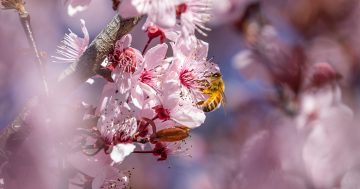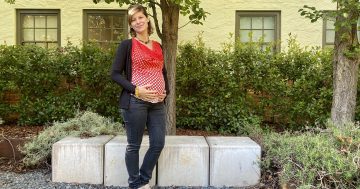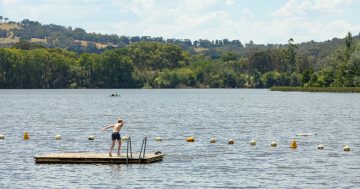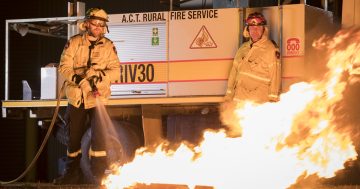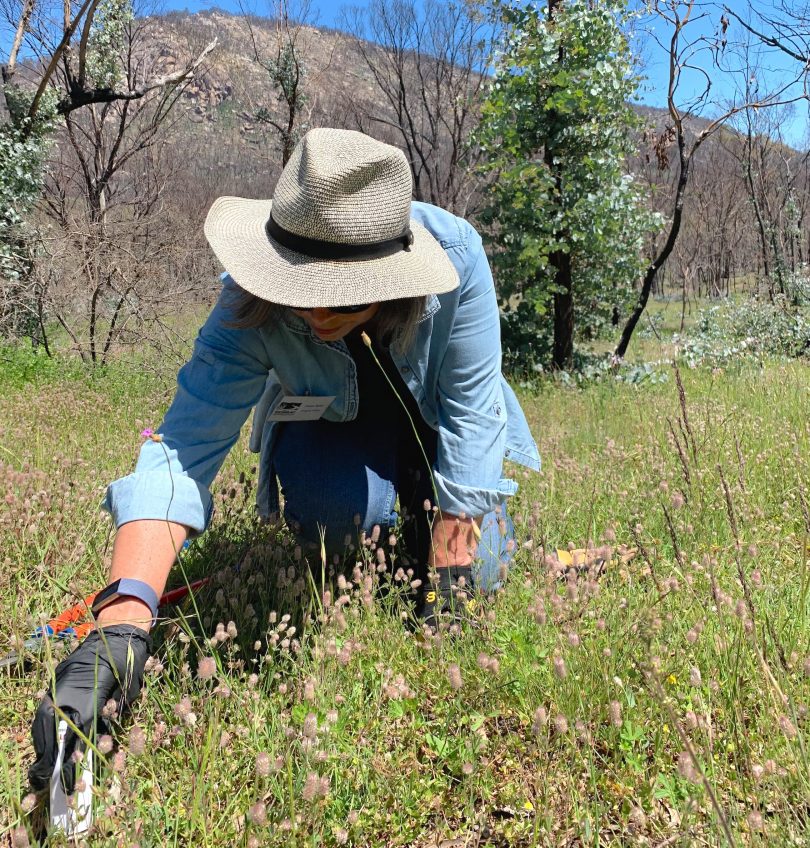
A Landcare volunteer dabs herbicide on weeds at Namadgi National Park in November. Photo: Landcare ACT.
Canberra’s record season of sneezing is coming to end, with one of our leading environmental scientists declaring the run of high pollen days is over … for now.
Canberra’s very own pollen counter Professor Simon Haberle, a researcher with the ANU’s School of Culture, History and Language, who also runs the pollen monitoring website Canberra Pollen and Canberra Pollen App, says the last week has seen low to moderate levels of grass pollen recorded.
This should signal the end of grass pollen season for 2020, he says.
“It looks like the main pollen season is done,” Professor Haberle told Region Media yesterday (14 December).
“All the indications are that the pollen count will remain low through to Christmas.”
This will come as a relief for at least one-in-three Canberrans who suffer from hayfever or asthma and have been triggered by high and extreme pollen levels since September.
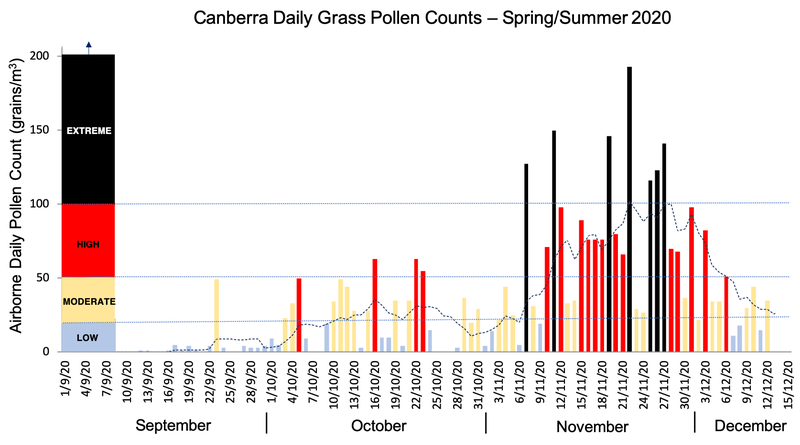
Daily grass pollen counts for Canberra from September to mid-December. Image: Canberra Pollen website.
During the drought years of 2016-2019, the grass pollen levels were much lower with an average of only three days of high grass pollen and zero days of extreme levels.
Heavy rainfall during winter and spring, caused largely by the La Niña weather pattern, has meant pollen counts in November were extreme on at least six days in November.
An extreme pollen count is measured as being more than 100 grass grains per cubic metre. A low count is between 0 and 19, moderate is 20-49 and high is 50-99.
“Last Saturday, we recorded 129 grass grains per cubic metre,” Professor Haberle said, adding that an average Canberra grass pollen season has only five high and two extreme days.
“So far this season, we’ve had 17 high days and seven extreme grass pollen days. This also resulted in four thunderstorm asthma warnings being issued for Canberra and the region during the spring months,” he said.
The last seven days have only seen low levels recorded.
“Grass pollen levels continue to be recorded at moderate to low levels, though we may expect this to continue to reduce through to the end of the month, which is a very good sign for the Christmas holiday celebrations.”
However, Professor Haberle said there is still a good chance that a second wave of pollen will infiltrate the region when the tropical grasses begin to flower in mid-to-late January.
“Because of climate change, we’re seeing sub-tropical grasses such as buffalo grass finding its way further south. That is usually dominant between January and February,” he said.
With his team of researchers, Professor Haberle says Canberra’s pastures and urban treescapes make it susceptible to high levels of pollen or fungal spores.
“We often see an increase in fungal spores about two to four days after a major rain event, but lower temperatures in December have also kept things in check.
“We think it’s important to promote awareness around air quality. We’re working hard to get the information out there as we’re keen to promote good health and well being in Canberra and part of that is knowing more about the air we breathe,” Professor Haberle said.
For those wondering when it will actually feel like summer, you will have to keep waiting, with mild temperatures and a high chance of up to 15 mm of rain on Wednesday (16 December). Further rainfall is forecast right through to Sunday with temperatures in the low to mid-20s.
You can find out about daily pollen levels on the Canberra Pollen Count and Forecast website.













